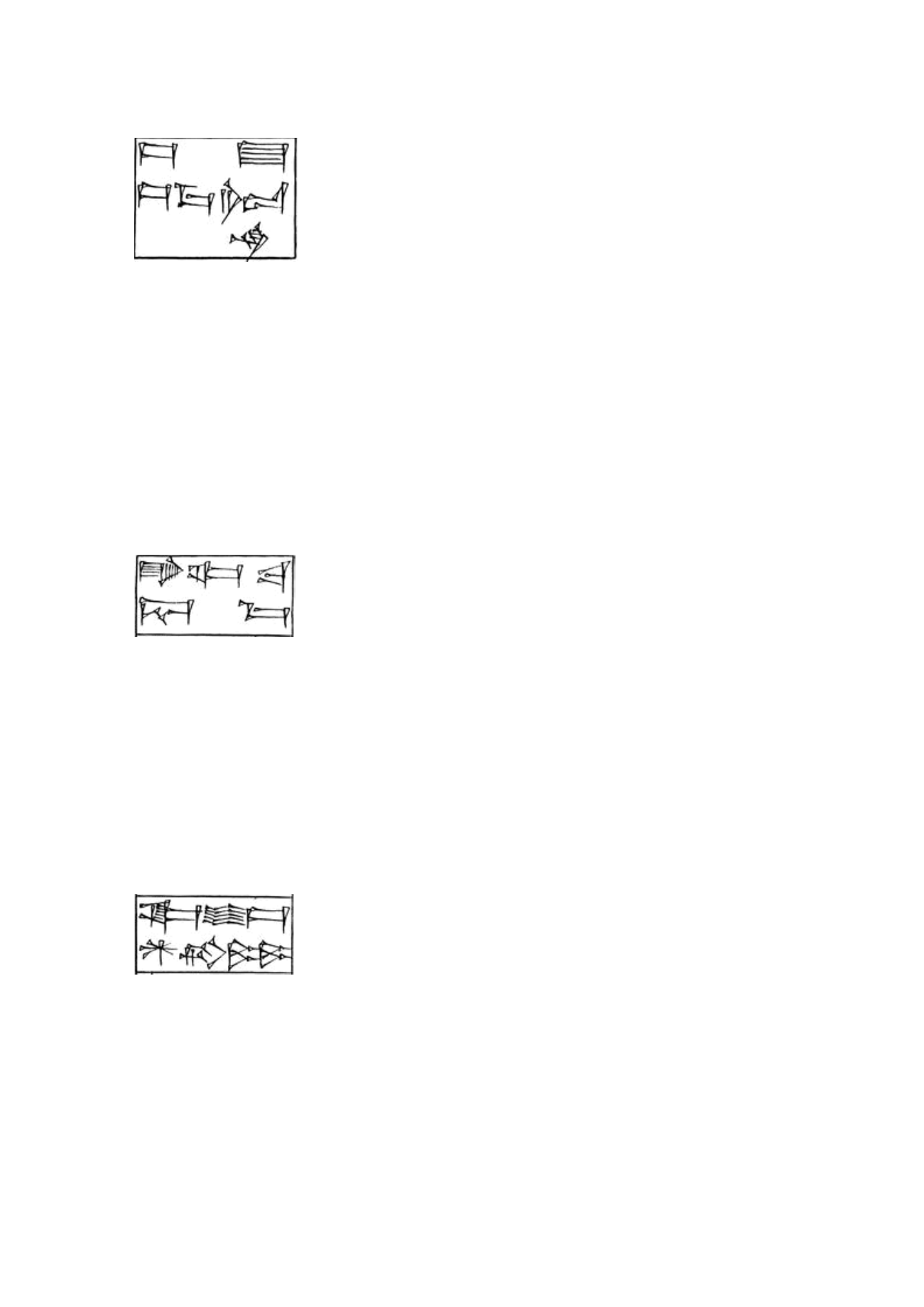

354
Gudea di Lagash – La costruzione del tempio di Ninjirsu - Cilindro B
B III.19 – 877
jiš<.ji
6
>.par
4
jiš.peš
3
nij
2
.jen.najiš
ji
6
.par
4
jiš
peš
3
nij
2
.jen.nafrutti jiparu, (?), dolci di fichi (?)
jiš
ji
6
.par
4
: probabilmente un frutto, non identificato. SL riporta un ji
6
.par
(3,4)
“residence of the en priest or
priestess ('night' + 'to stretch out')”, termine discusso anche in MSG.222-223, 237-238 “the part of the
temple where the en-priestess lived. It was borrowed into akkadian as
gip
"
ru
”. PSD2.101 riporta tuttavia
anche un
jiš
ji
6
.par
4
[GIŠ.MI.NI.GIŠ] “a type of fruit tree; a fruit”, accadico
lib
"
ru
. Il segno par
4
[KISAL]
(LEC.262) è la grafia moderna di par
3
(LEC.87)
jiš
peš
3
: “ fig; fig tree (moist container + še
3
, 'portion')” (SL); “figue, figuier” (PLS.116). Il segno peš
3
è il
segno [MA]
nij
2
.jen.na: non trovo su SL l’intera sequenza; esiste un
jin.na“ ordinary ('ordinary' + nominative)”;
“ordinairement” (PLS.66), ma non trovo che possa dare qui un senso. La traduzione “dolce” (sostantivo)
deriva dall’interpretazione del verso successivo
B III.20 – 878
gar
2
saj.badim
2
.ma
gar
2
saj.bi.a dim
2
.a
con sopra del formaggio,
lett. “formaggio fatto sulla sua testa”
gar
2
[GA] : “thick milk, cream; cheese” (SL, s.v. gara
2,9,10
, gar
2,9,10,11,12
); “crème, fromage” (PLS.53); “cream”
(PSD2.75); accadico garû “cream”; il semplice ga vale “milk” (SL). LEC.326 dà al segno il valore GAR
2
e GAR
9
(PSD2.75 legge gar
9
)
saj.bi.a : “sulla sua testa”. col marker del locativo, “an der Spitze” (unklar; GSG1.109; unklare Beleg,
GSG2.115)
dim
2
.a : participio passivo, non tradotto in Falkenstein (GSG1.142; GSG2.115); per dim
2
[GIM] “to make”
vedi A VI.22, XXIII.6
B III.21 – 879
zu
2
.lum
JIŠ.ANještin tur.tur
zu
2
.lum
JIŠ.ANještin tur.tur
datteri, jishan, piccoli grappoli d’uva (?),
zu
2
.lum(.ma) [KA.LUM] : “date fruit ('teeth' + 'to be satiated')” (SL); “dattes sechées” (PLS.158); “the fruit
of the date-palm” (PSD2.294); accadico suluppu “date”
ještin : “vine; wine; grape juice; bunch of grapes” (SL); vedi A XXV.15
tur.tur : “little ones (cf., didi “young, small”; di
4
.di
4
.la “children”) (reduplicated 'little')” (SL); “les petits”
(PLS.144); potrebbe anche leggersi di
4
.di
4
, poiché il segno tur si legge anche di
4
(SL sotto di
4
rimanda a
tur); vedi A XXVI.27
















